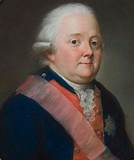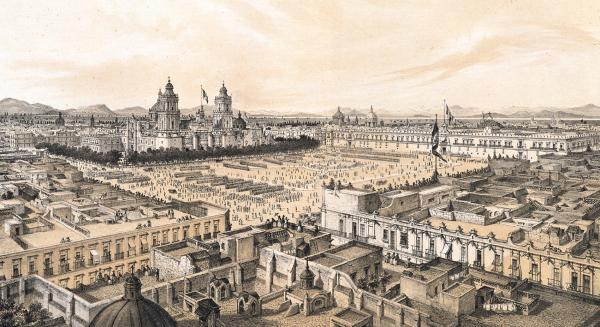The North Spy, the fourth novel in the Yankee Doodle Spies series, contains a trove of historical persons as fascinating as any of the fictional characters I developed for the story. However, one of the most interesting personalities in the campaign still needs to receive representation. I strike a mea culpa for leaving out the remarkable woman who was part of it all, and I hope to make up for it with this post.
Military Brat
The lady in question is a German-born daughter of a senior officer in the army of Frederick the Great. Presumably named for her father's sovereign and military overlord, Fredericka Charlotte Louise von Masow was born in 1746 in Brandenburg, Prussia. The young aristocrat received an excellent education via tutors hired by her father, Count Hans Jurgen Detloff von Masow, as the general brought his family with him in various assignments. Nicknamed the Baroness, Fredericka and her sisters blossomed into beautiful, educated, and refined young women and attracted many young officers.
Military Match
One of these was a dashing (was there another kind?) young cavalry officer, Friedrich Adolphus von Riedesel. The two aristocrats married in 1762, and Fredericka settled into the life of a military wife in a comfortable Berlin home, where she soon bore two children. Unfortunately, neither baby survived infancy.
Friederich's military duties uprooted the family. Some sixteen years later, he was a dragoon captain in the army of the Duke of Brunswick, a north German principality. Fredericka and her children lived with him in a lavish house in Wolfenbuettel. But the peacetime idyll was about to end for Fredericka and her family.
Summons to War
When the American Revolution broke out in 1775, the British soon found themselves short on manpower, so the king pulsed his continental "cousins" for help. The Duke leased his army to King George of England, as did several other minor German princes, most notably the Prince of Hesse-Kassel. The Americans soon referred to all the German auxiliaries serving the British as "Hessians."
In 1776 Friederich was promoted to general and, at the head of a force of German professionals, sailed to Quebec.
Follow the Drum
Family traditions die hard, and Fredericka was determined to accompany her husband, but being heavy with child forced her to remain behind. However, a year later, she was able to pack up her children, along with servants and baggage, and make her way to Belgium, France, and then to England, where they boarded a ship and made the dangerous Atlantic crossing to North America.
The thirty-one-year-old Baroness and her three daughters arrived in Quebec just in time to witness some of the most dramatic events of the struggle between the American colonies and Britain. The cheerful and determined Fredericka had ignored the dire warnings of the primitive lifestyle and savagery of the New World. But Quebec was essentially a French provincial town, and she quickly settled in.
Camp Follower
The British had sent a new army to Canada as part of General John Burgoyne's ambitious plan to divide the colonies by an invasion from the north aimed at linking with British forces that would march north from New York and join together at Albany. Over 8,000 British regulars, Canadians, Indians, and Germans made up Burgoyne's well-equipped force.
Accompanying them was a contingent of camp followers made up of provisioners and a sizeable number of women who provided services such as cooking, cleaning and repairing clothing, and, most importantly, caring for the sick and wounded. So women accompanying the army were a norm in 18th-century warfare. However, a high-born and refined noblewoman rarely followed the gun. But the beautiful Fredericka's blue eyes, dark hair, and graceful manner quickly won the hearts of the officers and men who met her.
Blitzkrieg
Not quite a blitzkrieg, but by early July 1777, the invading forces quickly traversed Lake Champlain and took the mightiest bastion in North America, Fort Ticonderoga. The army soon moved south, pursuing the fleeing rebels to Fort Edward and Fort George. Could the fall of Albany be far off?
Fredericka and her children (plus servants) made their way through the verdant wilderness to join her husband at Fort George. The primeval beauty of the land was impressive, but soon, the savagery of warfare overwhelmed them.
The extensive 200-mile supply line resulted in supply shortages just as the army seemed to be closing in on its objective. So General Burgoyne dispatched von Riedesel and his German troops to foray through the New York forests and fields to requisition livestock, foodstuffs, and wagons.
Von Riedesel objected due to the uncertainties and distances involved. But he complied, informing his wife it was too dangerous for her to accompany him. She refused to stay behind and insisted on joining his column, which suffered defeat at the hands of John Stark and the New Hampshire militia at Bennington.
Witness to Calamity
Despite the worsening supply situation, Burgoyne pressed south, and his army fought two battles against the Americans at Freeman's Farm in September and Bemis Heights in October. By now, the army was almost half its initial size, but morale remained high. The Americans had rallied large contingents of militia to reinforce the continental regiments under the new commander, General Horatio Gates. Both battles were bloody affairs. Fredericka tended to the wounded in both clashes. She even came under fire at Bemis Heights from the American artillery that ranged in on the house that served as a makeshift hospital. Gathering her girls, they took shelter in the cellar while cannon balls peppered the building.
Bemis Heights was costly in many ways, but perhaps the most significant loss was the death of British General Simon Fraser, who fell to a sniper at the height of the battle. The gentlemanly Fraser and Fredericka had formed a close bond. The day after, she attended his funeral, a most somber event. The British withdrew to Saratoga, but growing numbers of rebels cut their supply lines, and Burgoyne was forced to sue for terms. In this case, "a convention" rather than an admission of surrender. But this euphemism could not erase the reality of more than 4,000 regulars falling to the rebels.
Saratoga Surrender
In many ways, what should have been the end of Fredericka's American adventure was just the beginning. On 17 October 1777, after witnessing the anguish of her husband and the entire army ground arms and standards before the watchful eyes of the Americans, our Baroness joined her husband and the rest of "The Convention Army" in captivity. Most of the officers were eventually repatriated to Britain most of the army wound up marching south for an extended period of imprisonment.
American Sojourn
General Phillip Schuyler, former commander of the Northern Department and wealthy and influential politician, invited her and her daughters to his Albany estate. Following this visit, she traveled to Cambridge, Massachusetts, where most prisoners initially stayed. As a senior officer, her husband and his family were treated as guests and joined in the active social life around Boston.
The Old Dominion
In late 1778 Frederika, her husband, and the girls were provided a carriage and escorted south along with many other prisoners. The Americans ordered this because of food shortages and the danger of the prisoners trying to escape to the British garrison at Newport, Rhode Island. The family suffered from hunger along the way and a perilous journey through the brutal winter's snow, ice, and mud. The locals did not treat them well. Frederika handled these hardships with grace and a positive attitude. Her husband, the general, not so much.
The long and tortuous journey south ended in the Virginia piedmont town of Charlottesville in January 1779. Life improved in the Old Dominion. The family settled on a nearby estate, living a happy plantation lifestyle. Her husband took up gardening, and she took to the piano. They were introduced to the planter social scene and were guests of Thomas Jefferson, now Governor of Virginia.
New York State of Mind
Later that year, the von Riedesels were directed to travel north. Her husband would be paroled, pending his official exchange for captured (at Charleston) American General Benjamin Lincoln. Once there, life changed. New York was British, and the Loyalist population treated them well. They initially stayed at Governor Tryon's residence. Fredericka met (and charmed) numerous notables of the British garrison, including General Cornwallis, General Patterson, and the commander-in-chief, General Henry Clinton.
Her husband later obtained a comfortable home with elegant furnishings, and they became immersed in the society of occupied New York. They spent summers at General Clinton's country estate, and he often visited them, on one occasion in the company of notorious spymaster Major John Andre.
A smallpox outbreak caused the entire family to undergo the primitive vaccination process of the day. When the exchange became official and his parole ended, General von Riedesel received command of the British garrison on Long Island. The family accompanied him there, and Frederika gave birth to another girl whom she aptly named Amerika.
O Canada
In September 1781, the family left New York for Canada, where several of the general's German regiments remained. He was getting over a second bout of the fever. Life in Canada proved pleasant as the level of fighting reduced drastically after Yorktown. By 1783, British troops and their expensive auxiliaries were slowly departing for home or to defend other parts of the empire.
Royal Audience
The von Riedesels sailed after the last Germans departed but stopped in England, where King George and his queen received the ever-popular Fredericka and her husband. She regaled Queen Charlotte and the royal princesses with tales of her adventures in the wonderous and anguished New World.
In der Heimat
The return to Germany proved bittersweet. Fredericka rejoiced to see her husband reunited with his old command, and the locals welcomed them to the Heimatland (Homeland). But she had memories of suffering that made an impression that would not fade. Too many promising young men had suffered hardship and were maimed, wounded, or buried in a faraway land.
Retirement and Remembrance
The von Riedesels then returned to Brunswick, where von Riedesel commanded the Brunswick troops. After six years, they retired to Lauterbach castle. After the death of her husband in 1800, Frederika spent most of her time in Berlin, where she founded a home for military orphans. She also built a house for the poor in Brunswick. Frederika passed away on 29 March 1808. But she had captured her incredible life of adventure in her memoirs. Compiled from her letters and diary, they provided a unique view of the war in the New World – a woman's perspective.



































































